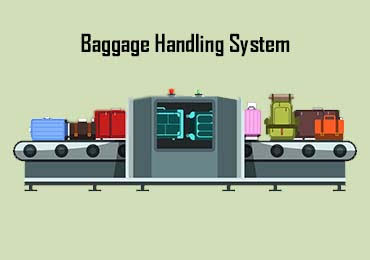How Baggage Handling Systems are Driving Automation Across Airports
Baggage Handling Systems (BHS) are widely used in airports to carry, check, and deliver luggage at a particular place. This airport conveyor system transports checked luggage from ticket counters to the place where the luggage will be loaded into airplanes. Technology has emerged as a significant necessity as growing innovations are expected to change the outlook of the overall industry.
Airports are continuously adopting advanced technology to cater to the demands of the people. The new range of innovations in the baggage handling systems is expected to contribute to the same. The initial role of a BHS is to shift base. However, various companies are working on embedding RFID and other technologies to enhance the capabilities of technology. Thus, it will potentially shape the future of the baggage handling system industry. According to Astute Analytica, the global baggage handling systems market is forecast to grow at a compound annual growth rate (CAGR) of more than 7% during the forecast period from 2021 to 2027.

Automatic Baggage Handling systems are expected to become the new normal due to the growing demand for advanced technology across the aviation industry. The automatic baggage handling system automatically transports baggage from the check-in counter to the baggage sorting belt. Modern airports are using this technology as it automatically performs X-rays. Further, it also reduces the demand for heavy manual labor. Thus, they efficiently contribute to the aerospace environment by completing the most tedious tasks. Before discussing the scope of the technology, let’s dive deeper into its benefits and how it is driving automation across airlines.
- Automated Baggage Handling Systems prevent workers from performing heavy manual work. Moreover, it easily handles heavy workloads carrying more than 40kg at once.
- It also reduces the chances of damage to baggage and increases the safety of flight safety.
- Most baggage handling systems are adjustable and adaptable to consumer variety, which will potentially shape their scope in the coming years.
List of New Technologies
Demand for innovations is growing in airports. Thus, it is shaping the future of the baggage handling system industry. For instance, the baggage holding system was upgraded at Stansted Airport for £70 million in 2021. The airport has opened the four-year project aimed at substantial upgrades to the airport’s baggage network. Old conveyor belts and chutes have also been replaced with the new 2.4 kilometers of track and 180 automated carts in the new Beumer cutover system. The technology is claimed to be faster and more efficient. Moreover, bags will take about six minutes to travel from check-in to being ready to load onto an aircraft, traveling at speeds of up to five meters per second.
Avinor’s Baggage Handling System Project
Another most renowned innovation in the industry is Avinor’s Baggage Handling System Project. In 2020, Avinor’s project, “Automated Baggage Handling,” was among the top innovations that won a total of NOK 15 million in funding. The company is among the leading firms focusing on a research project aimed at bringing its modern baggage handling systems.
Avinor is looking to partner with a private supplier to automate the first and last miles of its baggage handling processes because it recognizes that the need for handling solutions is a significant challenge for airports and airlines around the world.
Avinor’s project aimed at automated baggage handling is expected to address challenges relevant to various stakeholders.
What is New in The Baggage Handling Systems?
Baggage Handling Systems are considered to be the hearts of large airports, performing the most tedious task. Here is the list of things that users can expect from baggage handling systems of the new generation.
Integrated Security Screening
Automated baggage handling systems are expected to help users with security screening. In 2019, the 18,000ft baggage reconciliation area at Miami International Airport in Florida unveiled a new $324 million fully automated system. The system includes 12 new CTX 9800 explosives detection system machines, nearly nine miles of the conveyor belt, and 102 mobile inspection tables.
These mobile inspection tables automatically transport bags to 52 TSA inspection stations that need extra screening. As a result, it reduced the need for inspection officers to lift and pull luggage. It also benefits consumers by improving tracking accuracy and speeding up the baggage screening process.
Bar Coding and RFID
The major advancement in baggage handling technology in recent years has been Radio Frequency Identification (RFID). While only a few airports around the world use RFID, the technology is gaining traction due to its cost-effectiveness and efficiency beyond traditional bar-coded baggage tags.
RFID’s rise to prominence as the baggage tracking technology can easily perform near-perfect end-to-end sorting, tracing, tracking, and other tasks.
Checking In
Baggage Handling systems can also help passengers during check-ins. Weighing and conveying systems with ergonomic designs for the convenience of ticket counter personnel and passengers are among the key advances in baggage handling at check-in. These systems improve check-in counter efficiency, speed, and accuracy while streamlining the process and reducing passenger wait times.









